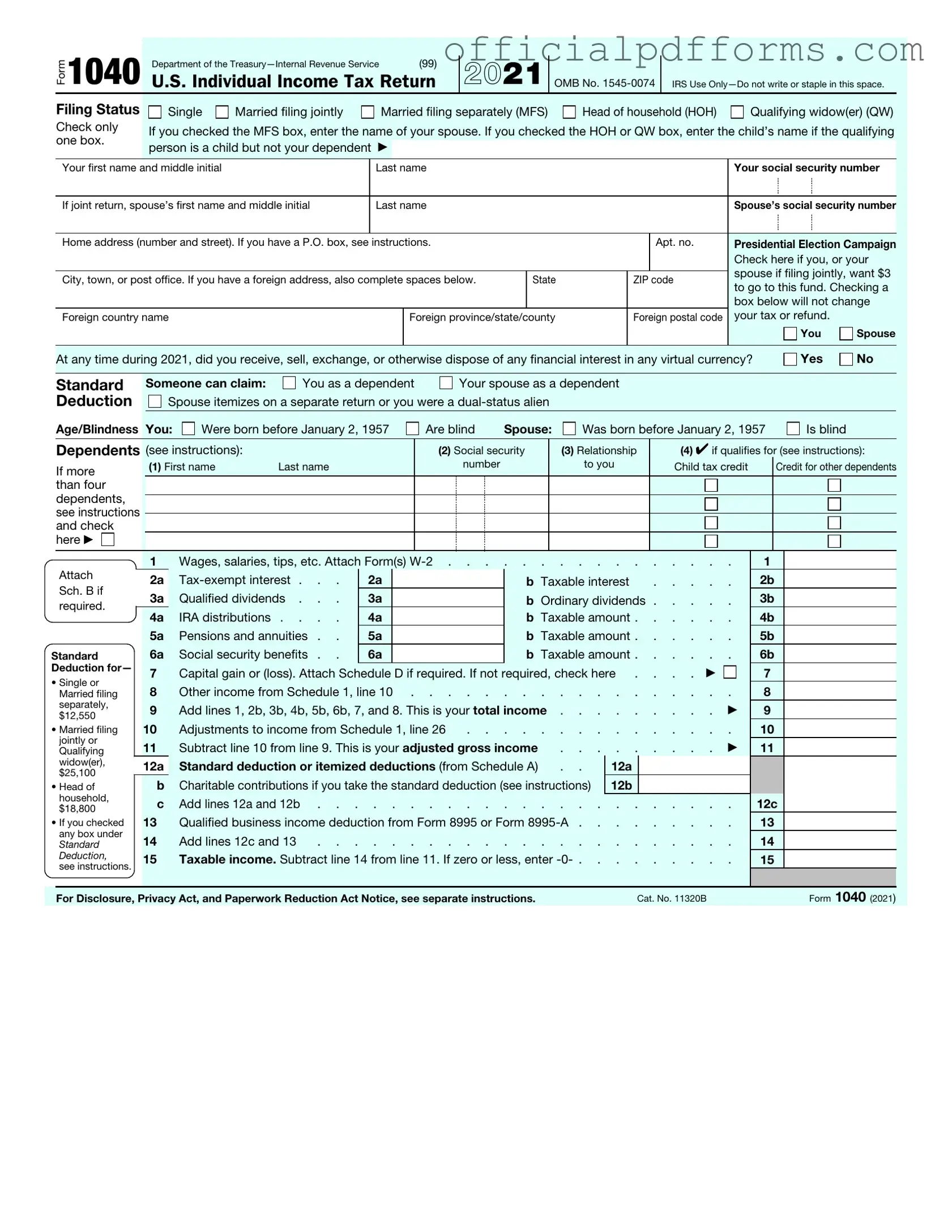The IRS 1040 form is a standard individual income tax return form used by U.S. taxpayers to report their annual income. It allows individuals to calculate their taxable income and determine the amount of tax owed or the refund due. The form is essential for fulfilling federal tax obligations and is typically due on April 15 each year.
Most U.S. citizens and residents who earn income must file a 1040 form. This includes individuals who:
-
Have a gross income that meets or exceeds the IRS filing threshold.
-
Are self-employed or receive income from freelance work.
-
Are claiming certain tax credits or deductions.
Even if your income is below the threshold, you may want to file to claim a refund or certain credits.
The IRS offers several versions of the 1040 form to accommodate various taxpayer situations:
-
Form 1040:
The standard form for most taxpayers.
-
Form 1040-SR:
Designed for seniors aged 65 and older, featuring larger print and a simpler layout.
-
Form 1040-NR:
For non-resident aliens who earn income in the U.S.
Each version serves specific needs, so it is essential to choose the correct one based on your residency status and age.
To complete the 1040 form, gather the following documents:
-
W-2 forms from employers, showing wages and withheld taxes.
-
1099 forms for other income sources, such as freelance work or interest.
-
Records of any deductions or credits, such as mortgage interest statements or education expenses.
-
Social Security numbers for yourself and any dependents.
Having these documents ready will streamline the filing process and help ensure accuracy.
You can file the 1040 form in several ways:
-
Electronically, using tax software or a tax professional.
-
By mail, sending a paper form to the appropriate IRS address.
Filing electronically is often faster and can result in quicker refunds. If you choose to file by mail, ensure you send it to the correct address based on your state.
What if I owe taxes?
If you owe taxes, you must pay the amount due by the filing deadline to avoid penalties and interest. You have several options for payment:
-
Pay online through the IRS website.
-
Send a check or money order with your tax return.
-
Set up an installment agreement if you cannot pay the full amount at once.
It is important to address any tax liability promptly to minimize additional charges.
What if I am due a refund?
If you are due a refund, the IRS typically processes it within 21 days if you file electronically. You can check the status of your refund online using the IRS "Where's My Refund?" tool. Make sure to provide accurate banking information if you choose direct deposit for a faster refund.
Yes, if you discover an error after filing, you can amend your 1040 form using Form 1040-X. This form allows you to correct mistakes or make changes to your filing status, income, or deductions. It is advisable to file the amendment as soon as you realize the error, especially if it may affect your tax liability.
